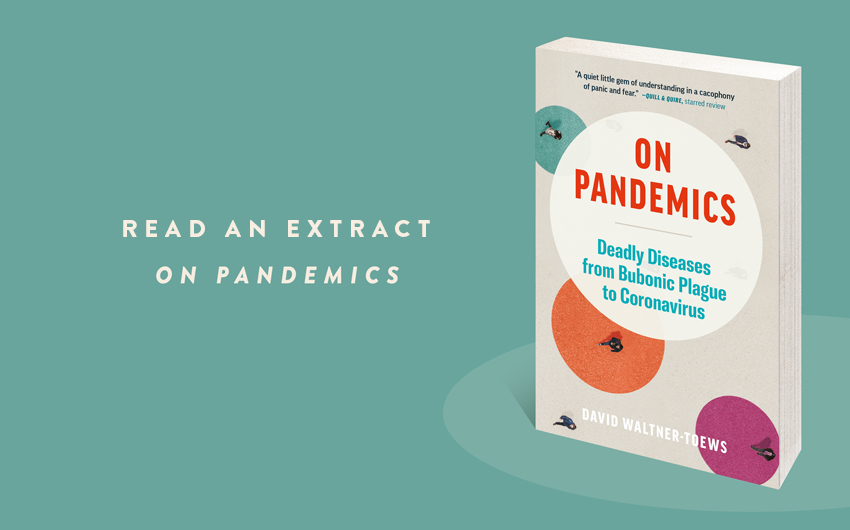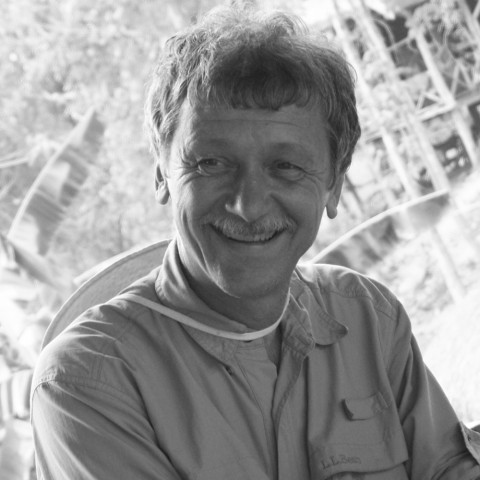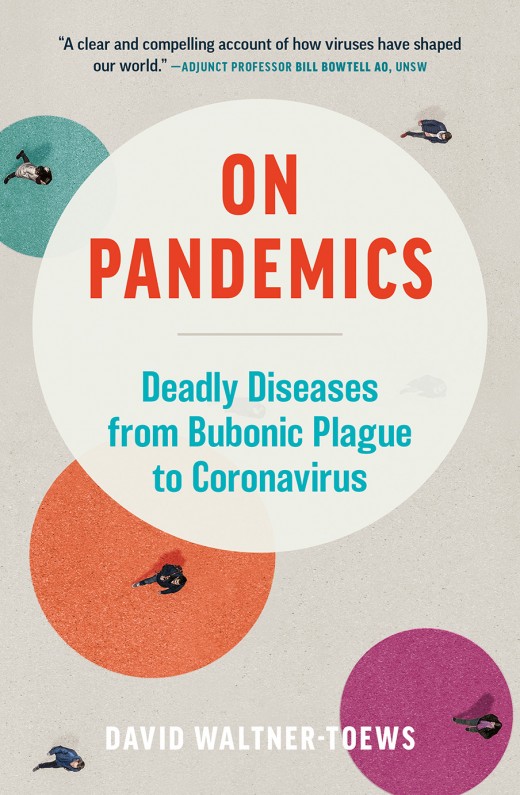News

News >
Read an extract: On Pandemics
How have economies of scale, loss of biodiversity and growing social inequity contributed to the speed and scope of COVID-19? Read an extract from On Pandemics, by leading epidemiologist David Waltner-Toews, out now.
Global patterns of zoonoses reflect complex social and ecological changes that go well beyond individuals and communities. It’s messy, but really, we know what needs doing, and have for a long time. If we look over the natural history of zoonoses and their emergence or re-emergence in the early twenty-first century, the general causes are a mixture of things. Often humans have created new urban or agricultural ecosystems in the ruins of older, non-human-dominated ecosystems. Ebola, Marburg, Chagas, SARS-COV, and SARS-COV-2 emerged in part because people invaded new territories where other animals and their microbes have lived in some rough kind of harmony for millennia.
Animals such as rats, raccoons, and coyotes have adapted to and changed human settlements, bringing with them viruses such as rabies and hantavirus, bacteria such as leptospires, and a variety of parasites. Economies of scale and monocultures in agriculture have created ideal conditions for the generation of epidemics of avian influenza, salmonellosis, and SARS-COV-2. Fast global travel and unfettered free trade have fostered the spread of epidemics. Loss of biodiversity, social inequity, marginalization of poor people, and the rapid sprawl of slums with bad housing, inadequate water, and standing sewage have created ecosystems that change the patterns of old infectious diseases and create opportunities for new ones. Climate change, much of it human induced, is contributing to the destabilization of ecosystems and the dispersal of animals and microbes into new areas. Talk of (re)creating natural harmony or ecological stability is an illusion.
In 1848, Rudolf Virchow, a renowned medical pathologist, was sent by the Prussian government to investigate the causes of a typhus epidemic in Upper Silesia. After intensive investigation, he submitted a report that recommended a program that included ‘full employment, higher wages, the establishment of agricultural co-operatives, universal education and the disestablishment of the Catholic church.’ Okay, that last bit was pushing his luck, but the rest made sense.
In 1992, the Institute of Medicine in the United States published a report on the resurgence and emergence of infectious diseases. They identified the following causes: human demographics and behavior; technology and industry; economic development and land use; international travel and commerce; microbial adaptation and change; and breakdown of public health measures. The report suggested better surveillance, vaccine and drug development, vector control (primarily through better pesticides), and human behavioral changes – for instance with regard to sexual relations and antibiotic use – as being appropriate responses. There was no mention of regulating land use or working for more equitable economic development, health insurance, or paid sick leave.
In 2008, more than 150 years after Virchow’s report, WHO published a review of evidence related to the social determinants of health. The authors, no flaming revolutionaries, declared that ‘social injustice is killing people on a grand scale’ and recommended that governments work to ‘improve daily living conditions, including the circumstances in which people are born, grow, live, work and age’ and to ‘tackle the inequitable distribution of power, money and resources – the structural drivers of those conditions – globally, nationally and locally.’
A few years later (in 2012), a review of progress since the 1992 report noted that new diseases, such as SARS and H5N1, had emerged since that first report, but that the most important advances in twenty years were ‘genomics-associated advances in microbial detection and treatment, improved disease surveillance, and greater awareness of EIDS [emerging infectious diseases] and the complicated variables that underlie emergence.’ So, none of the serious causes were addressed, and few epidemiologists – at least in the meetings I attended – were surprised to see COVID-19 galloping over the horizon.
If we have known for many years what needs to be done to prevent pandemics, why haven’t we acted? What these reports do not explicitly acknowledge, and what is not explicit in any list of ‘things to do to prevent a pandemic,’ is that in any such complex situation, we are faced with trade-offs. There is not a single, over-riding, science-based ‘truth,’ and many times, solutions to some problems create new ones. These ‘wicked problems’ are everywhere around us, and central to the issues we are facing with regard to preventing future pandemics.
Economies of scale and global trade also create ideal conditions for the emergence and spread of many new diseases. When viewed at this larger scale, the ‘whys’ and ‘becauses’ of any particular outbreak can go out in many different directions, and across geographic and political scales, with different winners and losers and feedback loops that are weakened (as between local farming practices and local environments) or created (as between local farming practices and global markets).
An outbreak on a particular chicken farm might be related to how the birds are housed, how crowded together they are, what other species live on the farms, what kinds of ‘bio-security’ are available, and the structure of markets. These factors, in turn, have to do with urban demands for certain kinds of food, with economics and culture, and with who has power (both electrical, which is required to manage intensive poultry barns, and political, which is required to manage economic markets). The spread of an epidemic has to do with the technical capacity for diagnosis and response, with the value of fighting cocks and show birds, with education of poor people, and women in particular, with communication among those working with the health of people and other animals, and with drugs and hospitals available at the points where the epidemics start, which are often poor and marginalized.
The rapidity and scale of changes associated with human activity now far exceed what we have seen before in our brief sojourn on this planet. We are sliding over the cusp of rapid climate change and environmental change. On the one hand, the openness and speed of sharing information during the COVID-19 pandemic has given the world more opportunities than ever to respond in adaptive ways.
On the other hand, the speed and scope of the pandemic, as well as the waves of floods, storms, droughts, and fires over the past decade, should give us pause. Can we get ahead by simply working longer hours and running faster? Will a quantum computer or a 5G network save us?
This is an edited extract from On Pandemics: Deadly Diseases From Bubonic Plague to Coronavirus, out now.
Share this post
About the author
David Waltner-Toews is a renowned Canadian epidemiologist, veterinarian and specialist in food and waterborne diseases, zoonoses and ecosystem health. He is professor emeritus at the University of Guelph, and has written more than twenty books, including poetry, short stories and nonfiction.
More about David Waltner-Toews




